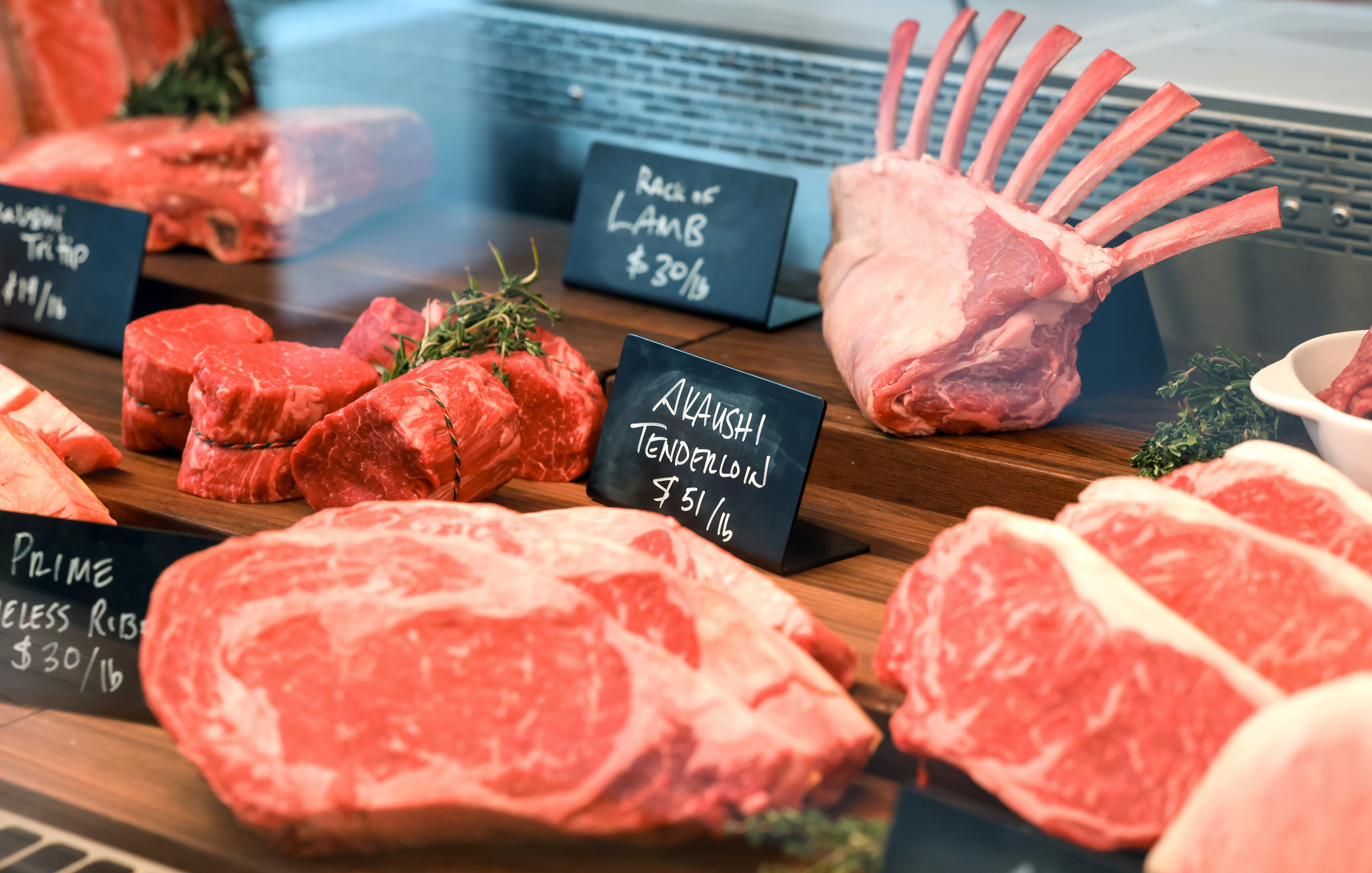Discover the Art of the Butcher's Cut in a Modern Meat Market
In the ever-evolving landscape of contemporary meat markets, the butcher's cut has actually transcended its traditional origins, merging age-old workmanship with modern methods. Today's butchers are not simply processors of meat; they are well-informed artisans who stress sustainability and moral sourcing. Their experience in choose and preparing cuts tailored to specific culinary requirements supplies an exceptional dining experience. Yet, what truly sets the modern butcher apart is their capacity to create a deeper link in between consumers and the beginnings of their meat. Just how do these masters balance tradition with technology, and what ramifications does this have for the future of meat consumption?
Development of Butchery Strategies
The development of butchery strategies shows a rich tapestry of advancement and adaptation driven by improvements in technology, modifications in customer demand, and a much deeper understanding of meat science. Historically, butchery was a craft gave via generations, with techniques sharpened over centuries to optimize yield and flavor. Nonetheless, the industrial transformation introduced automation, transforming conventional methods and making it possible for large processing.
The mid-20th century saw butchery methods better improved by clinical understandings into muscle mass biology and meat aging, improving both inflammation and preference. Developments like vacuum product packaging and refrigeration extended product shelf-life, enabling butchers to branch out offerings and boost quality control. This period also marked the increase of customized equipment, such as band saws and meat slicers, which enhanced precision and efficiency in meat processing.

Digital systems now aid in monitoring animal provenance and optimizing cuts to fulfill certain client preferences. In addition, a rebirth in artisanal butchery has arised, mixing conventional abilities with contemporary knowledge to cater to customers seeking moral and sustainable meat alternatives.
Recognizing Meat Cuts
Recognizing the complexities of meat cuts is crucial for both butchers and consumers looking for top quality and value. For butchers, specific cuts reflect ability and regard for the craft, guaranteeing marginal waste and optimum yield.

Comprehending muscle make-up is critical; muscular tissues utilized more regularly by the pet tend to be harder and are best fit for sluggish cooking approaches, while less-used muscle mass, like those found in the loin, are extra tender and suitable for grilling or roasting. Knowledge with these distinctions encourages consumers to make enlightened choices, improving their cooking ventures.
Selecting Top Quality Meat
Selecting the appropriate meat involves more than just selecting an aesthetically appealing item from the display screen. The art of picking quality meat needs a critical eye and understanding of details characteristics that symbolize quality and quality.
Second of all, consider the marbling, which refers to the white flecks of fat within the muscle. Appropriate marbling is a vital indication of tenderness and flavor, as it melts find here during cooking, improving the meat's juiciness. Keep in mind, higher marbling commonly associates with premium quality cuts, such as USDA Prime.
Texture is another vital aspect; meat must really feel solid to the touch, not slimy or extremely soft. Additionally, be mindful of the scent. Fresh meat should have a clean, neutral smell, devoid of any sour or off-putting smells.
Pairing Cuts With Cooking Approaches

Conversely, tougher cuts like brisket and chuck roast are abundant in collagen, which damages down right into gelatin when cooked gradually. These cuts are optimal for braising or slow-moving roasting, permitting the meat to tenderize in time and establish deep, intricate tastes. Likewise, cuts such as brief ribs and pork shoulder fare well with slow-cooking methods, where prolonged cooking times transform their robust structures right into delicious recipes.
Lamb shanks and oxtail, which call for long term cooking to tenderize, are best prospects for cooking or sluggish simmering. These techniques coax out rich, hearty flavors while maintaining moisture. By recognizing the one-of-a-kind features of each cut, cooks and home chefs alike can raise their culinary developments, making certain each recipe is both pleasing and remarkable.
The Butcher's Duty Today
Browsing the evolving landscape of the modern-day meat market, the butcher's function today extends past simple prep work of cuts. Contemporary butchers are cooking craftsmens, educators, and supporters for sustainable practices. They connect the gap in between the farm and the fork by making certain honest sourcing, understanding animal husbandry, and focusing on transparency in the supply chain. This change reflects the expanding consumer need for quality over amount, where provenance and animal well-being are vital.
In enhancement to crafting accurate cuts, butchers currently engage directly with consumers, providing cooking suggestions and customizing choices to match private demands and choices. Their know-how in meat aging, marbling, and taste accounts equips customers to make informed decisions, improving their cooking experiences. This customized solution exhibits the butcher's evolving function as a trusted advisor in the cooking area.
Moreover, butchers are essential in lessening waste, using entire animals to develop varied products such as sausages and supplies. This comprehensive technique not only appreciates the pet but additionally aligns with contemporary sustainability goals. In this method, the have a peek at this website modern-day butcher personifies both tradition and advancement, adjusting to an ever-changing market while maintaining the creativity and honesty of their craft.
Conclusion
The contemporary butcher's craft intricately weaves conventional methods with contemporary advancements, stressing lasting techniques and honest sourcing. Proficiency in recognizing varied meat cuts and top quality indications equips butchers to supply educated suggestions, lining up certain cuts with optimum food preparation approaches. This knowledge not only elevates cooking experiences yet additionally enhances the connection between customers and the origins of their food. By honoring historical techniques while welcoming contemporary demands, the butcher's role continues to be essential in today's advanced meat market (bagley farms meat market edwardsville il).
Comments on “What Makes Bagley Farms Meat Market Edwardsville IL Stick Out for Meat Lovers”